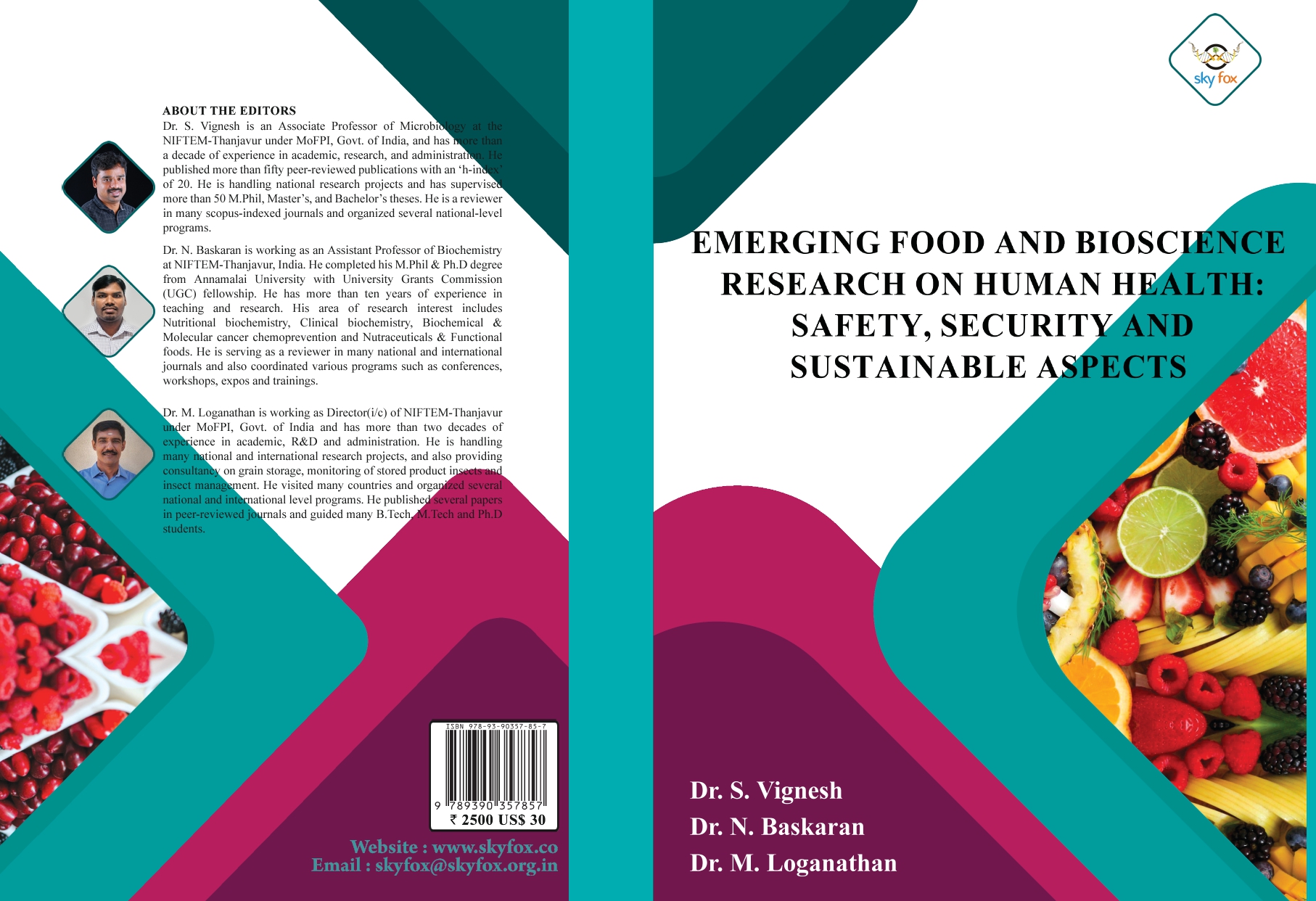Anthropometry Measurement of Tribal Children (Kurmi-Santal) Aged from 4- 12 Years on their Nutrition in Ranibandh Block of West Bengal, India
Chapter 11
Keywords:
Malnutrition, Tribal children, Anthropometry, Nutritional, Remote areaAbstract
In Developing country, many tribal children are facing malnutrition issues in remote area of Ranibandh block of Bankura district in West Bengal which severely affects the health of children. This cross-sectional survey, the study of aims is to know the various factors and status of nutritional in different aged group 4 to 12 years of tribal children The cross-sectional study of total 351 children’s (190 boys & 161 girls) is assessedin Ranibandh block during April, 2021- September,2022. To ensure better understanding of nutrition status, there are some strategies which is followed for analysis, such as, Interview method with questionnaire, Anthropometrics measurement of children is measured with standard procedure and analyzed parameters were weight, height, mid-upper arm circumference (MUAC) and body mass index (BMI) against age for children and also find out their stunting, wasting and underweight. There were Z-scores <-2.0 SD reference to WHO standards. There was a significance statistical value 0.05. Total prevalence in underweight, stunting, wasting was 60.12%, 59.28%, & 47.67%, respectively. Tribal children were suffering from severe underweight, acute nutritional stress and References to WHO classification, malnutrition, underweight and wasting was very high severe. There are found that tribal children nutritional status is weak than the general children according to their height, weight, BMI and under nutrition. It resulted that tribal children are facing a number of nutrient deficiencies with standardized RDA. There is importance for nutritional upliftment of community in long run and also need nutritional garden which helped accessibility and food security of tribal community and also need to govt. approved nutritional funding polices.
References
Bhandari, S., Ghose, M., Bose, K. 2019. “Socio-Demographic Characteristic and Prevalence of Under Nutrition among Adult Sabars of Bankura District, West Bengal, India”. Int J Adv Life Sci Res.1:01-10
Basai, S., Mallick, C. 2011. “Prevalence of under nutrition among Kora-Mudi children aged 2-13 years in Paschim Mednipur District, West Bengal. India”. World J Pediatr 7(1), 31-36.
International Institute for Population Sciences (IIPS) and ICF 2017. “National Family Health Survey (NFHS-4), 2015-16: India. Mumbai: IIPS”
International Institute for Population Sciences (IIPS) and ICF 2017. “National Family Health Survey (NFHS-4), India,2015-16: West Bengal. Mumbai: IIPS”
Mahata, A., Swain, K.C., Singha. 2021. “Traditional Medicines and Nutritional Products of Plants in Chhoto Nagpur Plateau. West Bengal, India”, In, Dey.S.and K (Eds), Lambert academic Publishing, Innovative Approaches on Environment Sustainability and Toxicology” (pp.51-62), ISBN: 978-620-4-19150-8.
Mondal, N.S., Debnath, S. 2018. “Prevalence of thinness among rural children of West Bengal, India”, Human Biol Rev. 7(4), 362-385.
Mollah, U., Bisai, S., Nandi, K.D. 2021. “Nutritional Status Based on Anthropometry of Tribal Children aged 3-11 Years of Paschimanchal Area in West Bengal, India”, Int J Cur Res Rev.13(18),144-150, DOI: http://dx.doi.org/10.31782/IJCRR.2021.131824.
Singha, C., Swain, K.C., Sahoo, B.B., Ghose, P., Swain.S.K. 2019. “Assessment of bio diversity conservation using geospatial models”, Journal of Pharmacognosy and Phytochemistry, 8(1), 1177-1186.
Sinha, R., Sharma, B. 2013. “Impact of Nutritional Intervention on the Selected Tribes in Jharkhand”. India Res J Ext Edu. 13(1), 123-125.
Usman, M., Murtaza, G., Ditta, A. 2021. “Nutritional, Medicinal and Cosmetic Value of Bioactive Compounds in Button Mushroom (Agaricus bisporus): A Review”. Applied Sciences.11 (13), 5943.https://doi.org/10.3390/app11135943.
West Bengal, data highlights 2001. “The Scheduled Tribes census of India, Office of the registrar general, India”.1-4.
World Health Organization 2006. “The WHO Child Growth Standard Geneva: WHO”
World Health Organization 1995. “Physical Status: The Use and Interpretation of Anthropometry”. Technical Report Series no.854. WHO: Geneva.
Downloads
Published
Issue
Section
Categories
License
Copyright (c) 2023 © 2023 The Author(s), under exclusive license to Skyfox Publishing Group

This work is licensed under a Creative Commons Attribution 4.0 International License.
Our journals offer different licence options, please see the Instructions to Authors page of the relevant journal for more information.
Books and book chapters
When publishing a book, or a chapter in a book, the terms of licensing and copyright will typically be included in a contract which you would have to agree with a publisher and which will specify the usage rights, the format(s) and length of time applied to the work.
Book contracts vary from publisher to publisher, and can in some cases be complicated. If you are required to sign a contract with a publisher in order to publish your work you need to ensure that the contract covers your rights and that it takes into account the obligation you have to your employer and/or the funder of your research.
If you want to publish a thesis or dissertation it is recommended that you contact your institution or department to make sure that you follow their policy for such publications.
Kindly Check the concern book title for How To Cite. Plese ignore if any citation format provided in Book Section





